Flashback to 2012. The education sector buzzed about a new technology destined to transform education. It promised new opportunities for students to easily consume multimodal content, demonstrate their understanding through multiple forms of media, and curate portfolios of work. Schools and systems bought iPads in droves. Teachers experimented with hundreds of apps. Today, it remains one of my favorite devices. The promise was there, and then?
A decade later, we have replaced the hype around iPads with artificial intelligence (AI). Across the K-12 sector, educators, leaders, policymakers, and technologists tout its transformative power to personalize learning, automate administrative tasks, and enhance educational outcomes. According to a report from RAND, approximately 25% of teachers and 60% of principals started using AI during the 2023-24 school year. Meanwhile, survey data collected by the Pew Research Center indicates that a similar percentage of teachers believe that AI does more harm than good. Time and again, new technologies have been promoted as magical solutions to the challenges facing education. Each time, they are hailed as transformative or even disruptive by some and just another fad by others. In this moment, as the education sector wrestles with whether AI might be a driving force for positive change or a quintessential threat, how will we know if we fundamentally improved student learning?
Putting Students Before Technology
This time, we have to start with a clear, measurable understanding of student outcomes. AI could be used to provide real-time feedback, free up a teacher so that they have the time to offer individualized support, or quickly differentiate course content. However, these efforts must be in the service of a broader measurable objective — progress towards reading standards, increased critical reasoning skills, demonstrated use of mathematical language, growth on curriculum-based assessments….
To actually understand the effects of AI, or any other technology, we need to routinely ask two questions: Is it working? And how do we know?
At The Learning Accelerator (TLA), we have been building the infrastructure to address these questions. Core to this effort is an underlying theory of change to identify and explain the strategies and practices driving outcomes. We built this theory based on what we know about effective instructional practices, and it starts with learners at the center.
- IF specific students engage with AI-powered tools (or anything else) within the core of instruction…
- AND teachers implement strategies that are Targeted & Relevant, Actively Engaging, Socially Connected, and/or Growth Oriented…
- THEN students engage in learning experiences that are personalized to meet their unique strengths, needs, interests, context, communities, and identities; mastery-based to address specific learning outcomes; and focused on the whole child, reflecting the science of learning to support comprehensive human development…
- SO THAT they achieve measurable learning outcomes.
What This Looks Like in Practice: Two Examples from Our Accelerating Adoption Network
Our Exponential Learning Initiative has identified learning acceleration as a critical challenge facing the field. We take an expansive view beyond merely bridging learning gaps in reading and math and consider the need to create new, high-quality learning opportunities that previously did not exist — whether due to time, resources, or other constraints. Real, durable, sustainable solutions need to happen within the core of instruction.
Currently, 10 networks participating in our Accelerating Adoption Network are implementing and scaling programs designed to accelerate learning. For example, Building21 is scaling an AI project builder and feedback tool (Beacon) to help students design competency-based, project-based learning experiences aligned to their English Language Arts (ELA) standards. In contrast, Coursemojo is a curriculum-aligned, AI-platform that provides personalized, real-time feedback on reading and writing tasks with the goal of ensuring that students make immediate improvements in close-reading and writing with the longer-term objective of demonstrated mastery as measured by standardized assessments. These networks represent two different approaches with AI, and yet they both endeavor to produce measurable student ELA outcomes.
The Questions to Tackle as a Sector
This April, thousands of technologists, venture capitalists, policymakers, and practitioners will descend on the annual ASU-GSV Summit. Already, the hype cycle has started about the potential for AI to fundamentally change education. This time, we need to learn better and faster from our past experiences. We know the two questions that we need to ask — is it working, and how do we know? — as well as what we hope for the answers to be. As with its predecessors, AI uniquely offers the promise to fundamentally redesign the system of schooling in the service of learning: let’s coordinate as a sector to really do it this time.
If you’re going to be at the AI Show on Monday, please come join me, Rae Lymer, and our colleagues from Building21 and Coursemojo. We plan to share how we have started to tackle the question of “Is It Working?” and build an evidence base to inform AI (or anything else) initiatives. Session information is at the link here.

